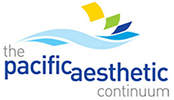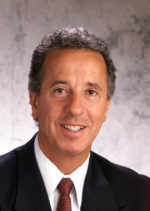
Dr. Samir Ayoub
An up and coming, popular, and very talented plastic surgeon came to my office recently for a cosmetic consultation. He does mostly faces and he wanted to do something to enhance his smile. He did not like the space between #8 and #9 and #10 and #11. He felt his teeth were dull and unappealing. He also wanted a brighter smile (Figure 1, 2, and 3).
Upon initial examination, I suggested orthodontic treatment and bleaching the teeth as an option. This young plastic surgeon did not want orthodontics. He knew of porcelain veneers and had heard of me in the San Francisco area. I had done smile design cases on two of his colleagues and he had seen cases on my website and was impressed.
I told him that I could do his case with four veneers but ideally, we should do ten teeth to fill out the buccal corridors and have better color and proportion control to design an optimal smile.
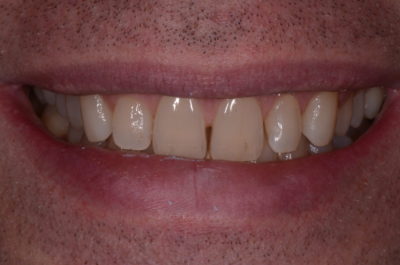
Figure 1
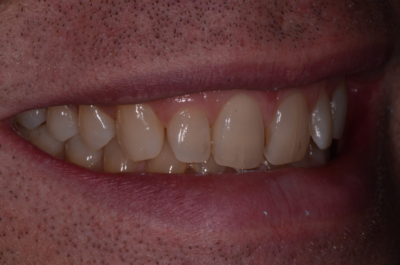
Figure 2
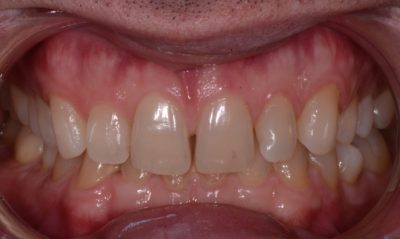
Figure 3
To demonstrate to him as well as myself, I did a quick composite mock-up. First doing #7, 8. 9, and 10, taking a photo and then completing the mock-up from #4 through #13. He liked the ten teeth design as it demonstrated the fuller smile, the effects of gradation, the arch form improvement, and the space closures and creating better proportion and balance (Figure 4 and 5).
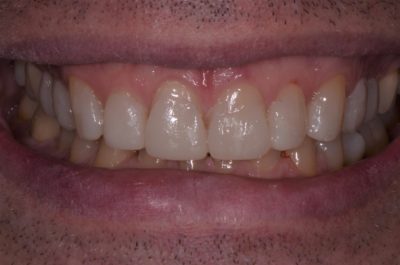
Figure 4
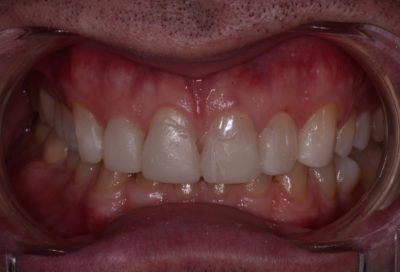
Figure 5
Liking what he saw, he chose to proceed. I took photographs of the composite mock-ups to aid in laboratory communication.
After removing the mock-up, we proceeded with the standard twelve photos, impressions, and horizontal stick bite. I sent these to the laboratory (Pacific Aesthetic Dental Studio/Corr Dental Designs) with directions to fabricate the wax-up, preparation guides, and temporary matrix. These were necessary to do an ideal case, very conservatively.
Because his ultra-modern plastic surgery office is near me in downtown San Francisco and my desire to verify the wax-up and our expectations, I had him come by my office for a “trial look”. The case being mostly additive, I was able to fill the temporary mold with Luxatemp and give him a preview of our final expectations (Figure 6 and 7). He took his new smile home for the night to show his wife for approval. He scheduled the prep appointment the next morning.
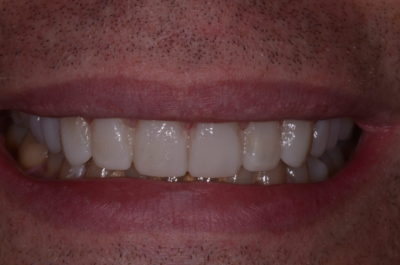
Figure 6
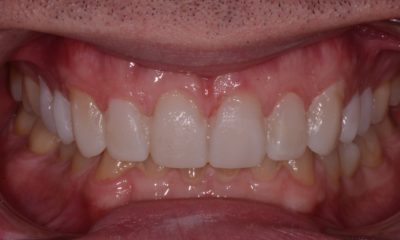
Figure 7
On prep day, we began by doing a Luxatemp overlay, depth cuts, and pencil markings, and then ideal, minimal preps using the incisal and facial preparation guides fabricated from the ideal wax-up. This allowed for appropriate removal of tooth structures both facially and interproximally giving the laboratory what they needed for fabricating the veneer restorations. We had 90% enamel on all teeth which would enhance a strong bond and maximum aesthetics.
Impressions were taken, prep shades were determined, and the case was photographed. A horizontal stick bite was also done and photographed. Provisionals were made (Figure 8, 9, and 10).
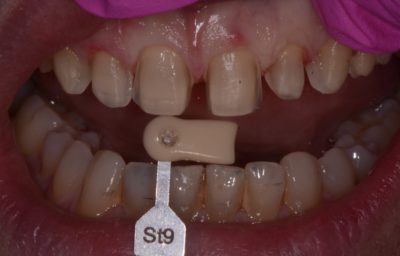
Figure 8
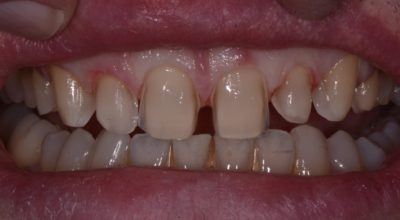
Figure 9
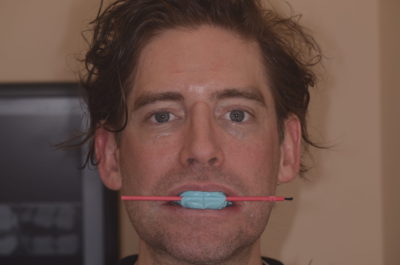
Figure 10
A couple of days later, he returned for evaluation and if needed correction of the provisional. No corrections were necessary. The patient approved and we agreed on a final shade and took impressions and photos of the temps for the laboratory to follow (Figure 11 and 12).
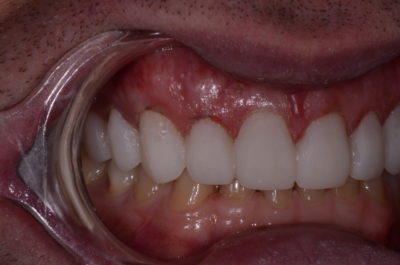
Figure 11
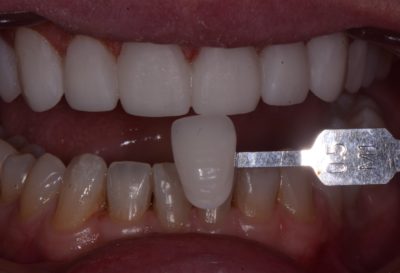
Figure 12
Two weeks later the veneers were tried individually first, and then in groups of three. The marginal fit was confirmed as well as interproximal contacts. Shade was approved and we were ready for cementation.
The veneers were prepared according to the Pacific Aesthetic Continuum teaching protocols. The teeth were cleaned, etched, bonded, and the veneers luted all ten at the same time, also as taught in the PAC hands-on courses. The excess resin was removed, margins finished, and polished, and the occlusion was checked in protrusion and lateral movements.
The plastic surgeon was pleased with the results (Figure 13, 14, and 15).
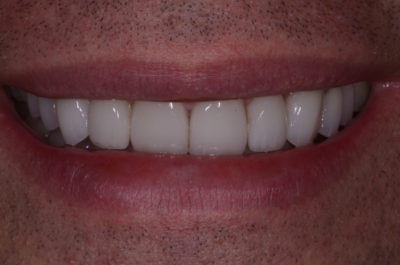
Figure 13
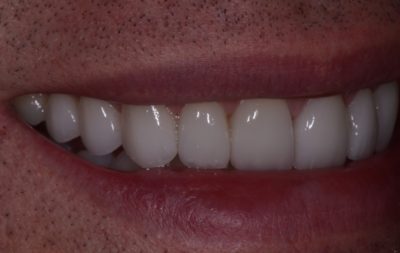
Figure 14
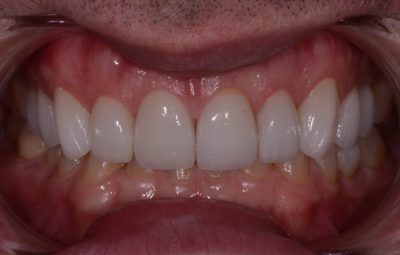
Figure 15
As we all want our smile design cases to be perfect, there is always some anxiety on the delivery day. I have done smile makeovers for several cosmetic plastic surgeons as well as dentists. The anxiety is even greater. Experience, knowledge, and proper preparation is paramount. Using a superior laboratory that understands smile design and dental materials as well as if not better than the cosmetic dentist, is mandatory to achieve excellent results.
Thanks to the team, led by Gary Vaughn, CDT, CTO at Pacific Aesthetic Dental Group/Corr Dental Designs for consistently performing at the highest level and always making me look good!
If you have questions about my article or if you would like to send a case, please contact the Pacific Aesthetic Laboratory Group at www.pacificaestheticdentalstudio.com, Gary Vaughn, CDT, CTO, (888) 461-3331, or via email [email protected].
